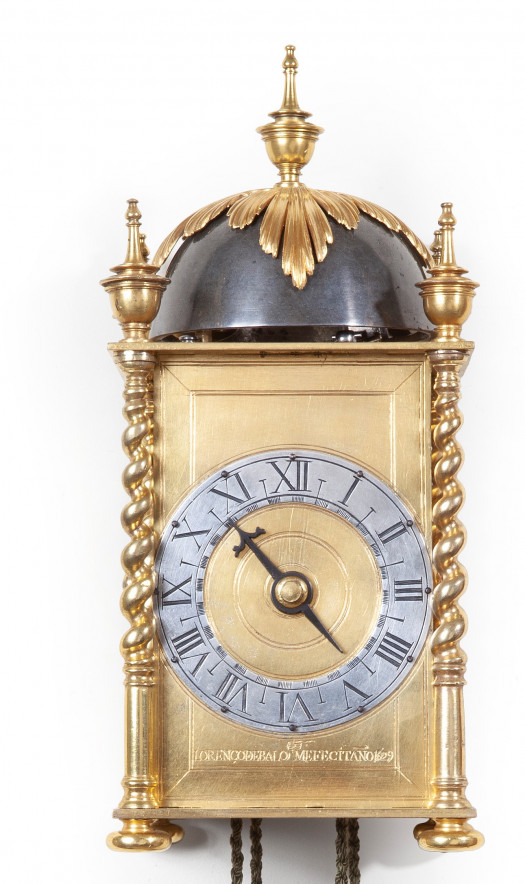
Spanish Türmchenuhr with weight drive
Lorenzo de Evalo Spain, 1
629 Height 27 x Width 12 x Depth 12 cm,
Original condition.
Clockwork The brass movement, built between struts, has an escapement consisting of a vertical verge escapement with balance - one of the earliest forms of an escapement in a mechanical movement. The movement is also equipped with a striking movement regulated by a locking disc. The striking movement indicates the time by striking a bell in full on the whole hour and the half hour on one occasion by means of a compulsion strike. The cam determines the correct number of strokes. Weights on a rope drive the going and percussion.
Dial The sober engravings in the ormolu dial make the silvered chapter ring stand out, the whole flanked by the beautifully twisted columns. The outstretched Roman numerals with tactile buttons mark the hours on the ring, a dash marks the half hours and the dashes serve for the quarters. The time is indicated by one blued steel hand. Below the dial is prominently the engraved signature: LORENÇO DE EBALO ME FECIT AÑO 1629.
Case The ormolu brass case catches the eye immediately thanks to its characteristic decorations. The four profiled pinnacles emphasize the four corners. The twisted shape of the corner pillars, in combination with the cushion-shaped capitals at the top and the pillar-shaped bases at the bottom, suggests movement. Engraved circles decorate the doors on both sides of the cupboard. The doors give access to the movement. A bronze bell - decorated with an ormolu brass ornament in acanthus leaf motif - crowns the case. Symmetry and contrast of shine on both doors, case and weights characterize the decorations. The harmonious relationship between the ornament parts fits the beauty ideal of the early Renaissance. However, the twisted shape of the columns is typical of the seventeenth-century Baroque and is reminiscent of the Salomonic column.
Price on request





